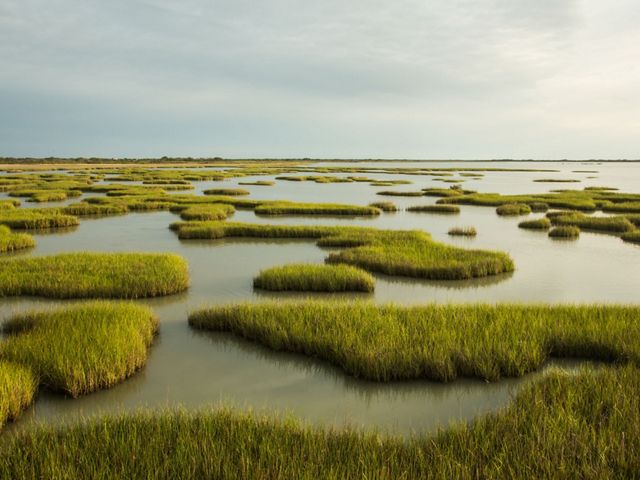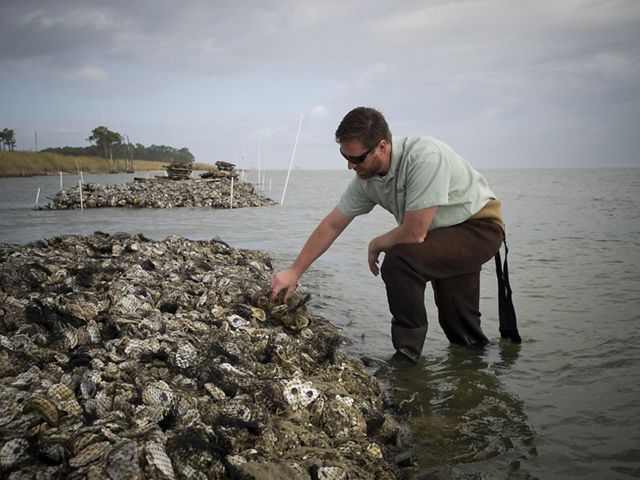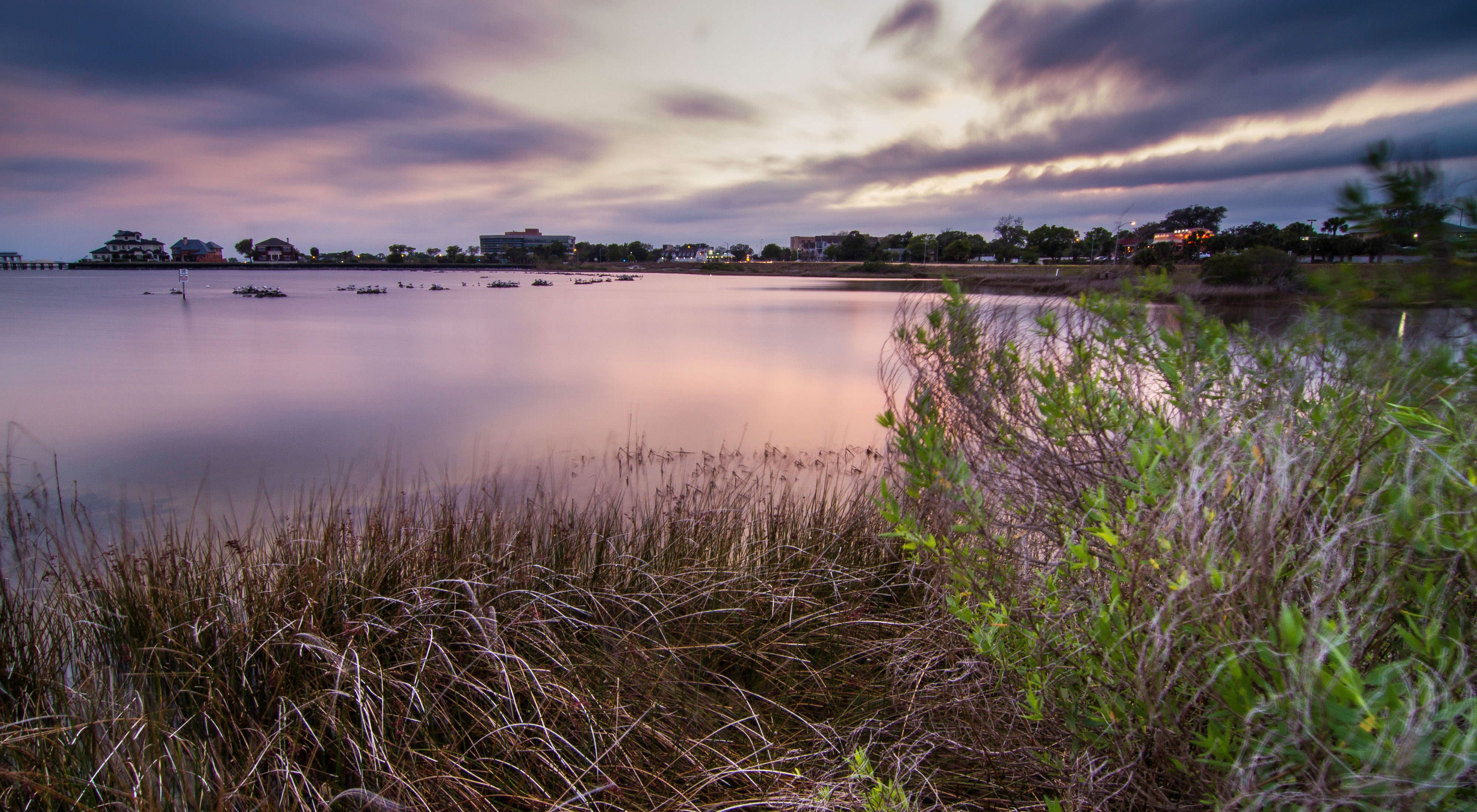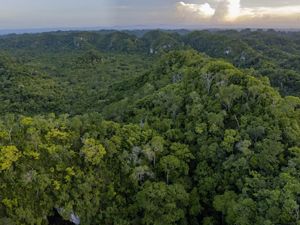Nature: A Better, Faster, Cost-Effective Answer for Climate Resilience?
By Lynn Scarlett, Former Chief External Affairs Officer
As sea levels rise and weather-related threats continue to increase, opportunities emerge for people and local governments to build “living shorelines.” These natural or nature-based structures are designed to reduce risk to communities and infrastructure from flooding and storm surge, while often providing the ecosystem benefits of habitat.
The U.S. Army Corps of Engineers proposed a new category in its nationwide permitting process that would allow speedier approval of living shorelines such as wetlands with sea and marsh grasses, sand dunes, mangroves and coral reefs. The category is now open for comment, reports Scientific American. Under the guidance of the Clean Water Act, permits are required for essentially all construction activities that occur in the nation’s waters, including wetlands.
Currently, it’s much faster for property owners in many parts of the country to get a permit for sea walls, bulkheads and other so-called gray infrastructure than it is to get a permit for the construction of nature-based systems since there is an existing nationwide permit that covers some of those activities. If the Army Corps moves forward with the new category, though, permits to build living shorelines could be issued in a quarter of the time it takes under the current model.

Turning to nature to reduce the impact of severe weather
This proposal comes as data continues to highlight the financial and physical impacts of climate change and severe weather. Since 2005, five major hurricanes have caused a total of more than 2,200 deaths and some $230 billion in damages in the United States. In the past 5 years, the Mississippi and U.S. coasts have repeatedly experienced historic flooding—damaging crops, businesses and communities.
The economic implications of extreme weather events are felt across the country. Ninety-six percent of the total U.S. population lives in counties where federally declared weather-related disasters have occurred since 2010. Meanwhile, average flood losses in the United States have increased steadily to nearly $10 billion annually, driving the National Flood Insurance Program $24 billion into debt.
To counter these risks and rising costs, we need solutions that are better, cheaper and smarter. Notably, some of our best solutions are also greener. Nations, communities and businesses are re-examining natural systems and their potential to meet economic, environmental and safety needs. We are asking, increasingly: How can we tap nature’s solutions to secure and sustain safe, prosperous coastal communities and healthy ecosystems?
Living shorelines utilize a combination of structural and natural materials such as wetlands, marshes, sand dunes, mangroves or coral reefs combined with coir fiber logs, sand fill and stone. They can reduce wave intensity, prevent erosion and provide a host of other economic and environmental benefits.
Quote
How can we tap nature’s solutions to secure and sustain safe, prosperous coastal communities and healthy ecosystems?
Natural coastline protection and climate resilience
The move toward more natural coastline protection comes as federal agencies, state and local governments, and business leaders focus increasingly on the concept of resilience as they plan for how communities will adapt to climate change.
Earlier this month, I was a featured speaker at a forum on the State of Resilience hosted by the National Academy of Sciences. In the panel’s closing remarks, Lt. Gen. Thomas Bostick, who retired last week as chief of the Army Corps of Engineers, spotlighted living shorelines as a “natural way that we can reclaim some of our land and take the focus off of expensive infrastructure.”
Quantifying the benefits of natural systems
As the world begins to recognize the many services that natural systems provide to people, communities and economies, decision-makers are increasingly looking to quantify and secure those benefits.
To invest in living shorelines, governments and businesses need to know just how much contribution these ecosystem services provide. They need to better understand the contexts within which natural systems support these services and how they might vary over space and time. They need to better understand the costs of losing these services as well as the costs of protecting or restoring them. And they must understand who could benefit from these services and, potentially, pay for the costs of maintaining them. In short, to advance investment in these ecosystem services, there are many needs and players to engage at multiple scales.
The Nature Conservancy and other partners are already trying to answer these questions. A joint report with the Natural Capital Project suggests that 16 percent of the near-shore coastline in the United States is classified as high-hazard. Reducing risks to these communities involves rethinking the role of nature itself.
Though we need more data and knowledge-building, the potential risk-reducing benefits of nature’s assets are not hypothetical. A 2011 analysis examined coastal marshes and their protective role. Across all studies, the scientists found that salt marsh vegetation significantly reduced wave strength and helped stabilize shorelines.

Best-practice examples emerging across the United States
Already, across the United States, some communities are tapping these benefits. In North Carolina’s Albemarle Sound, the Conservancy is expanding oyster reefs, sustaining and protecting coastal lands.
In Alabama, we helped build more than 1.5 miles of oyster reef with NOAA, other partners, and other funding. Data from two oyster reef restoration projects in Mobile Bay, Alabama, show an estimated 51 to 90 percent reduction in wave height and 76 to 99 percent reduction in wave energy at the shore from reef restoration. This restoration carries with it other benefits, including enhanced fish and crab catch.
The Conservancy is not alone in drawing from nature’s solutions along coasts. A variety of “living shoreline” initiatives elsewhere are emerging. They include oyster reef enhancement, tidal marsh creation, beach nourishment and dune restoration, riparian vegetation management and “living” breakwaters. There is no one-size-fits-all approach to harnessing the value of nature to enhance coastal protection and provide other ecosystem services.
Some of the biggest challenges in addressing resilience may be those of governance and finance. Ecosystem services often are meaningful at scales that transcend the jurisdictional boundaries of political institutions and individual land owners. High-intensity storms along the Gulf of America, for example, affect multiple communities, even multiple nations. Degradation in the Chesapeake Bay results from actions that extend from land to sea and among multiple U.S. states and many communities. These and other challenges unfold at landscape and seascape scales.
The bottom line
Fundamentally, communities and governments face the challenge of how to achieve a decision scale “big enough to surround the problem, but small enough to tailor the solution,” as scholars at the Lincoln Institute of Land Policy have observed.
We know there is no one simple set of policy and financing tools to drive action, but ideas are emerging. In some cases, creation of “conservation banks” may fulfill the role of achieving scale. Incentives for “living shoreline” easements present a different tool to bring about aggregation of action across multiple properties.
All of these ideas, including those being floated by the Army Corp of Engineers, are not to suggest that nature-based solutions are an “either-or” approach. We can achieve comprehensive risk reduction when these solutions are planned and implemented together with a portfolio of other approaches. We need governance to facilitate regional, landscape-scale, or watershed-level actions and enhance coordination across jurisdictional boundaries. We need tools that focus on outcomes rather than prescriptions, and we need incentives that align with ecosystem services investments. Working towards “living shorelines” helps combine many of these criteria so that we might have healthy lands and waters, thriving communities and dynamic economies.
Originally Posted on Triple Pundit
July 21, 2016
View Original
Global Insights
Check out our latest thinking and real-world solutions to some of the most complex challenges facing people and the planet today.

